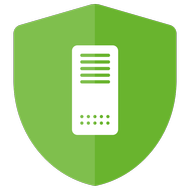-
Main Products
-
- Examine cybersecurity incidents Dr.Web FixIt!
- Protection for corporate networks with Dr.Web Enterprise Security Suite
- Protection for computers with Dr.Web Desktop Security Suite
- Protection for servers with Dr.Web Server Security Suite
- Email filtering with Dr.Web Mail Security Suite
- Protection for Internet gateways with Dr.Web Gateway Security Suite
- Protection for mobile devices with Dr.Web Mobile Security Suite
- Dr.Web Katana (Business Edition) — a second-level anti-virus
- The Dr.Web vxCube sandbox
-
Solutions
-
For technology partners
Dr.Web Server Security Suite

Protection for
- file servers
- application servers (including terminal and virtual servers)
